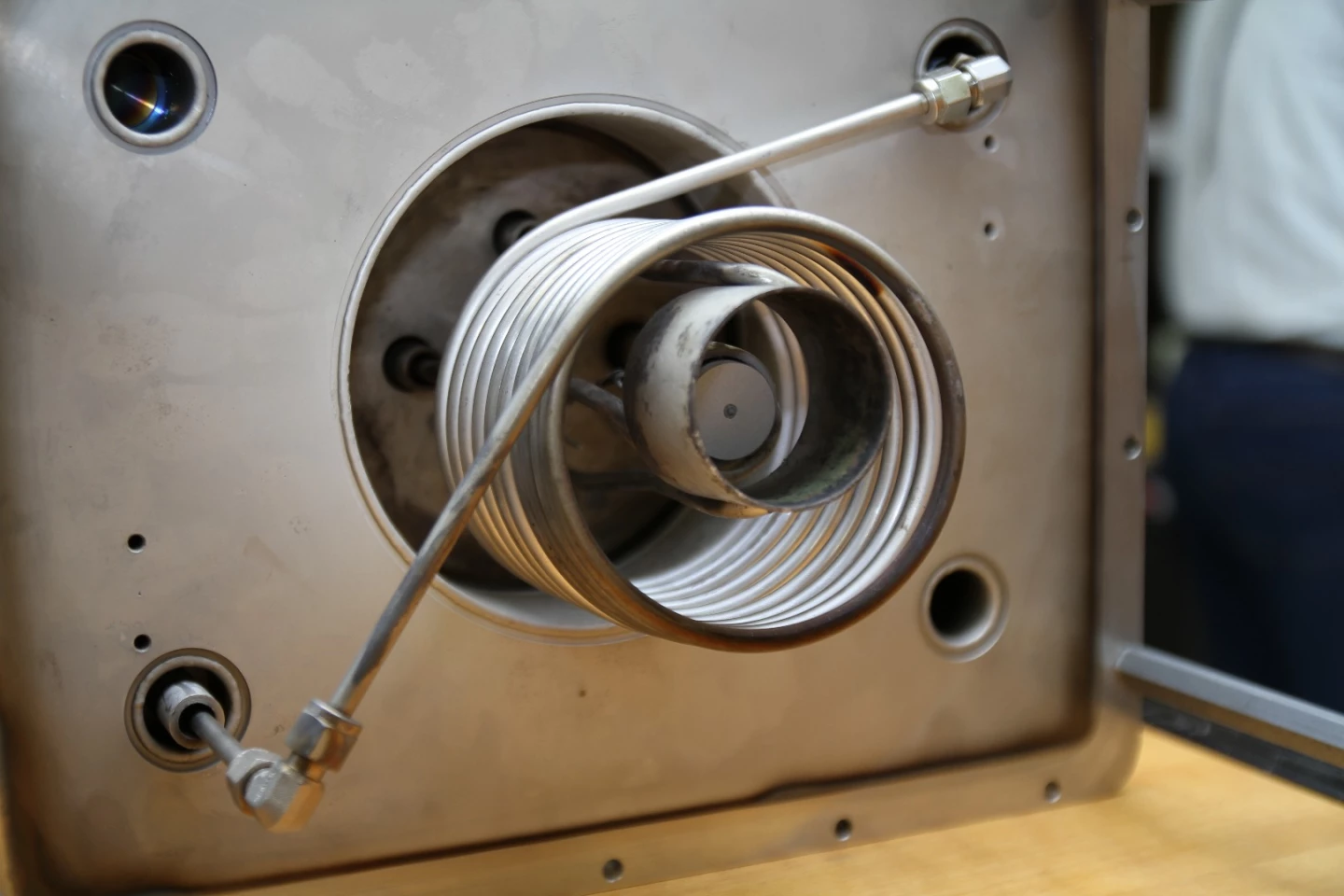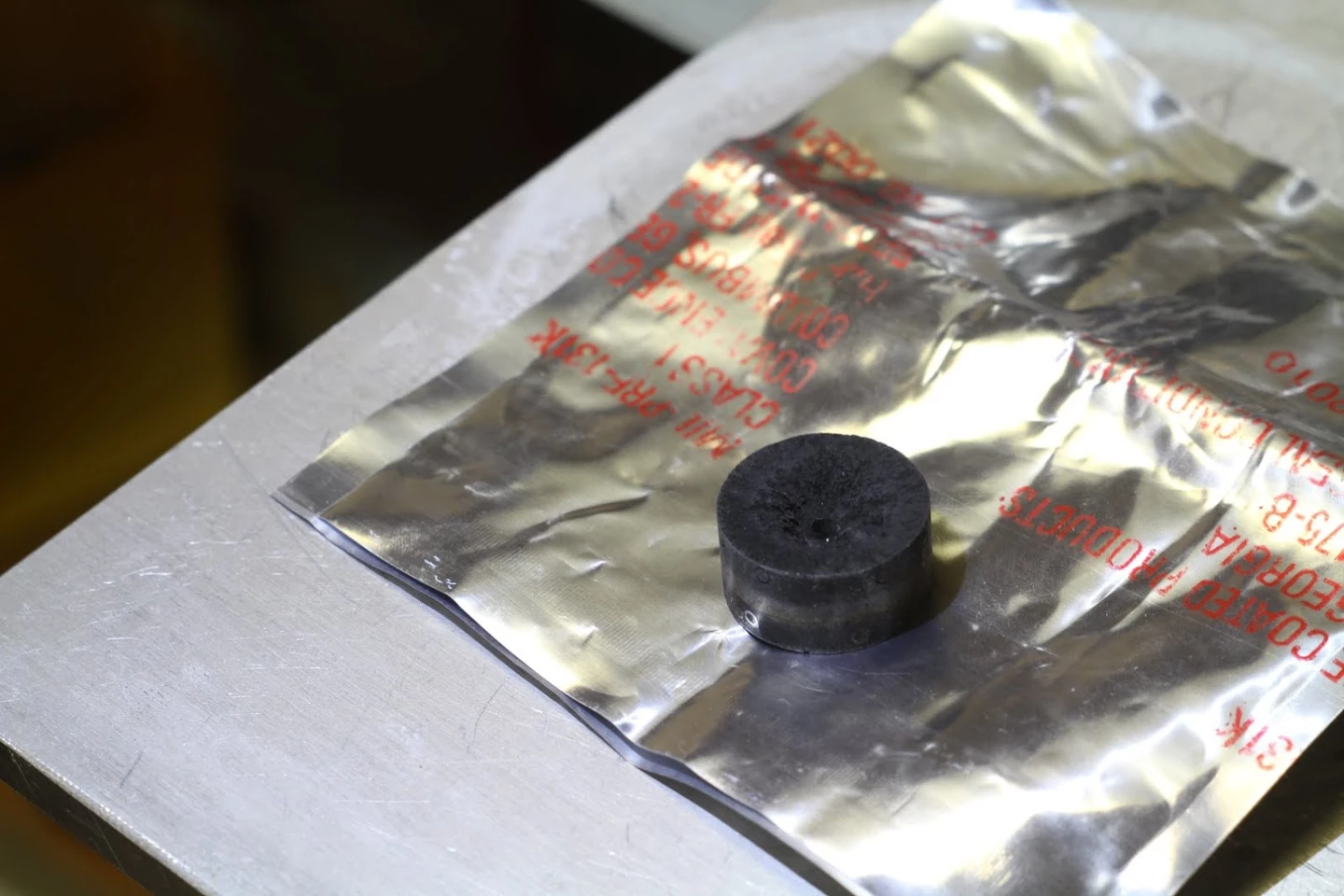It seems as if the age of the bench-top breakthrough in rocket science is not a thing of the past. Dr Patrick Neumann of the University of Sydney has developed a new ion drive as part of his PhD thesis that is claimed to outperform the best one devised by NASA. According to Neumann, his new drive, which is still in the experimental stage, is more efficient than the latest High Power Electric Propulsion (HiPEP) ion engine and holds the promise of "Mars and back on a tank of fuel."
Ion engines, which generate thrust by ionizing a propellent gas using an electric or magnetic field is a classic tortoise and the hare technology. Where chemical rockets can generate millions of pounds of thrust, an ion drive can only manage the equivalent of the weight of a coin. However, chemical rockets can only burn for a matter of minutes, while ion engines can burn for many thousands of hours. This means that while ion-propelled spacecraft are as flightworthy as paperweights on Earth, once they're in space they can achieve speeds well beyond anything a chemical rocket could manage.
The problem is, there isn't just one type of ion drive. In fact, there are several and each has its advantages and disadvantages. Some are very simple, but are extremely inefficient. Others generate lots of thrust, but are very complex and heavy. The trick is to find the right design operating on the right principle to produce the most efficient results.
The most effective ion drives in use today are electrostatic or electromagnetic propulsion systems. That is, they work by taking a gas, such as xenon, ionizing it by electron bombardment, radiofrequency excitation, or other methods and then accelerating the resulting ionized gas or plasma using an electrostatic grid or a magnet field.

The most effective of these are the ones based on the Hall effect, which uses an axial electrical field and a radial magnetic field into which electrons are squirted. The magnetic field holds the electrons in place and, as a propellant gas is introduced, they pick up a charge. Since the gas is heavier than the electrons, when the electric field is applied, the gas atoms can easily escape the magnetic field and be accelerated to produce thrust.
Of all the top-flight ion drives, the current prize winner is NASA's HiPEP engine. It uses a conventional hollow cathode configuration and a microwave electron cyclotron configuration to attain power levels of 40 kW and exhaust velocities of over 90,000 meters per second (200,000 mph). It's the record holder in terms of performance, but that may change if the Neumann drive pans out.
According to Neumann, his ion drive is a pulsed cathodic arc engine and, though the theory behind it is a bit involved, it's mechanically very simple. This isn't surprising, since in many ways it resembles the first ion engine that flew on the unsuccessful Soviet Zond 2 Mars probe that launched in 1964. It worked by heating up a plug of plastic until it boiled, ionizing the resulting gas, and then accelerating it. This was a very simple arrangement, but the Soviet design wasn't very efficient because most of the gas remained relatively cool, wouldn't ionize, and tended to block the plasma stream like filling up a drain with bacon grease.
The Neumann drive differs from this earlier technology in that it works on a principle similar to that of an arc-welding machine. A high-voltage electrical discharge is shot in pulses across the surface of a plug of solid propellant, which acts as a cathode. As the circuit is completed, the plug vaporizes and turns into a mixture of ions, electrons, and neutral vapor. This mixture expands and is accelerated by an anode ring, then focused by a magnetic ring into a plume of thrust.
According to Neumann, the result is an engine that already has the advantage over Hall thrusters in that it's much simpler and potentially more durable. Hall thrusters and similar systems rely on cryogenic gases that must be kept at extremely low temperatures and then fed into the engine. This means tanks, pumps, and a lot of plumbing. In addition, high-performance engines like HiPEP need very fine, very dense grids to accelerate the ions and to balance the electric charge of the escaping propellant. If this didn't happen, then the spacecraft would develop a very high electric charge, which would draw back the discharged ions and slow the craft down.
By contrast, the Neumann drive uses a solid plug of propellant of magnesium, titanium, vanadium, molybdenum, or even carbon that sits inside the engine chamber and is burned away by the arc without the need of any of the plumbing found in other engines. Also, there's no grid. In HiPEP, the grid is constantly bombarded during operations by atoms that reduce thrust and wear away at the mesh until large holes appear and grow and the drive ceases to function. That doesn't happen in the Neumann drive because the nature of the reaction is self-neutralizing.

However, the biggest factor in the Neumann drive is performance. In tests, Neumann found that his engine couldn't compete with the high-end devices. Where Hall thrusters produced 30 to 40 µN/W of thrust, the Neumann drive managed only in the 20s. Yet, in terms of specific impulse. the Neumann drive claims to come into its own.
There are many ways of describing specific impulse, but it's basically a measure of an engine's efficiency in terms of thrust over time. Perhaps the best way to define it is that it's how much time it takes for an engine to use up the weight of propellant equal to its thrust. In the case of an HiPEP system, this works out to 9,600 (+/- 200) seconds of specific impulse. On the other hand, the Neumann drive does 14,690 (+/- 2000) seconds, depending on which material is used as propellant.
Neumann says that with proper development, a practical version of this drive could be the key to exploiting the inner solar system from low Earth orbit. However, before that can happen, the new engine still needs to overcome several hurdles, such as finding a simple way of feeding the plug into the arc as it's burned up, improving performance, enhancing the thrust by means of magnetic field focusing, and introducing cathode spot steering for more even consumption of the fuel plug.
Dr Neumann will be presenting his findings at the 15th Australian Space Research Conference on September 30 at the Australian Defence Force Academy. In the meantime, after the University of Sydney relinquished intellectual property rights, Neumann applied and has been granted a provisional patent for the technology under a new company, Neumann Space.
Source: Neumann Space










